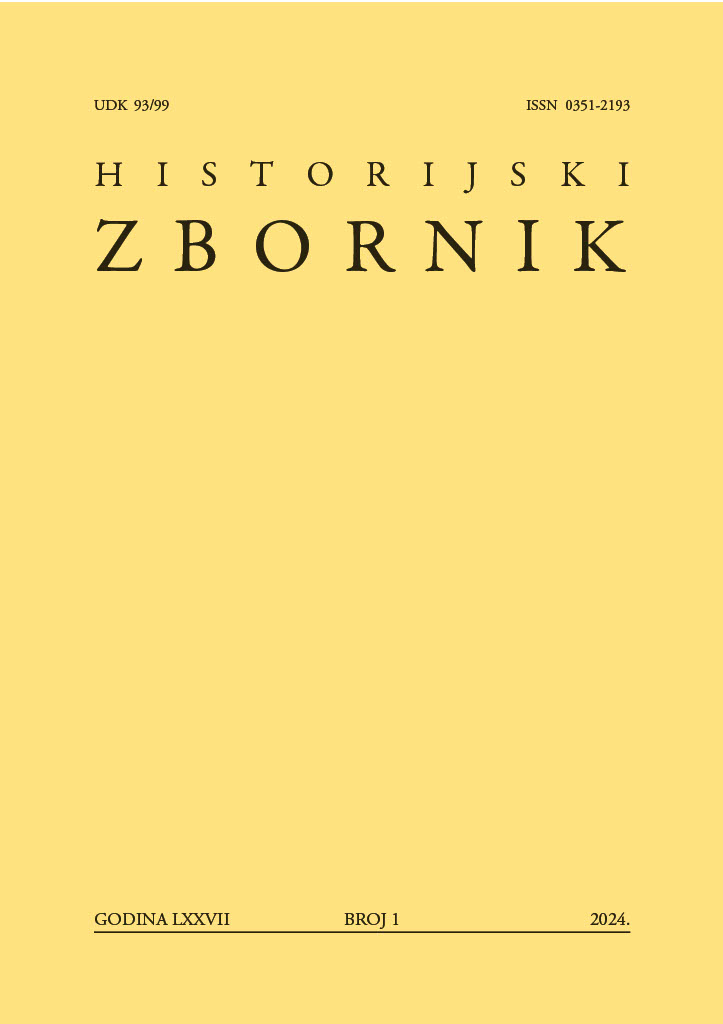Contribution to the study of the work of general-purpose agricultural cooperatives in the Federative People's Republic of Yugoslavia. Example of Karlovac District (1950-1952)
DOI:
https://doi.org/10.59412/hz.77.1.5Keywords:
Federal People’s Republic of Yugoslavia; Karlovac District; general-purpose agricultural cooperatives; 1950 – 1952, the Communist Party of YugoslaviaAbstract
In early 1950, the governing bodies of the Federal People’s Republic of Yugoslavia issued an all-encompassing, developmental plan for the general-purpose agricultural cooperatives. The realization of that plan was to provide an organizational consolidation and professional training for member farmers, the development of the agricultural production, a greater engagement of the workers in the buyouts, a more economical collection of savings shares, a more effective development of workers’ trade and hospitality, as well as an improvement of cultural, societal, and economic standards of the peasant population. On the July 18, 1946 the People’s Assembly of the Federal People’s Republic of Yugoslavia passed the Basic Law on Agricultural Cooperatives. This Law established the following types of cooperatives: agricultural trade cooperatives; workers-consumers cooperatives; agricultural, manufacture and processing cooperatives; crafts-manufacturing and processing cooperatives; credit, housing and healthcare cooperatives; and peasant working cooperatives. With the passing of the Basic Law on Cooperatives, the idea of the Communist Party of Yugoslavia, which implied state ownership and planned production, gradually began to be realized. The result was the abandoning of the principle that the land belonged to those who worked on it. Instead, that was the beginning of the collectivization of the peasants’ land. By collectivization and centralization of the peasants’ land, i.e. the introduction of cooperatives, the communists wanted to ration the production and mechanize agriculture. Soon after the end of the Second World War, the lowest and the most common type of cooperatives were trade cooperatives, which were dedicated to the trade of the products between the cooperative and the peasants, but also to the neutralization of the “economic role of the capitalist trade of independent traders”. The general-purpose cooperatives included the sectors of manufacture and trade. Furthermore, besides the cooperatives’ assets, the shared land and machinery, the general-purpose agricultural cooperatives included an organized craftsmanship and a collaborative work of the cooperative members who had the right to keep their private assets and land. This paper, based on the unpublished archive materials and news articles, analyzes the work of four general-purpose agricultural cooperatives in the Karlovac District from the years 1950 to 1952. The analysis encompasses the general-purpose agricultural cooperatives in Duga Resa, Mali Erjavec, Novigrad and Vivodina.
Published
Versions
- 2024-07-28 (2)
- 2024-07-28 (1)
How to Cite
Issue
Section
License

This work is licensed under a Creative Commons Attribution-NonCommercial 4.0 International License.
Copyright holders are the publisher Association for Croatian History and the authors.
Historical Journal is an Open Access journal. Users are allowed to read, download, copy, redistribute, print, search and link to material, and alter, transform, or build upon the material, or use them for any other lawful purpose as long as they attribute the source in an appropriate manner according to the Creative Commons licence CC BY-NC.
The papers published in Historical Journal can be deposited and self archived in the institutional and thematic repositories providing the link to the journal's web pages and HRČAK. Journal does not charge article processing charges (APC). The editors assume no responsibility for statements of fact or opinion made by contributors.

